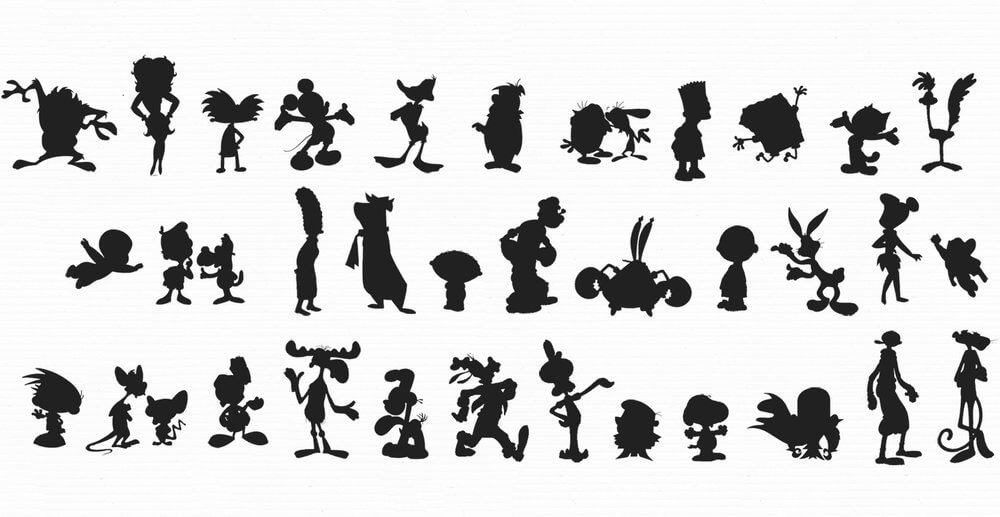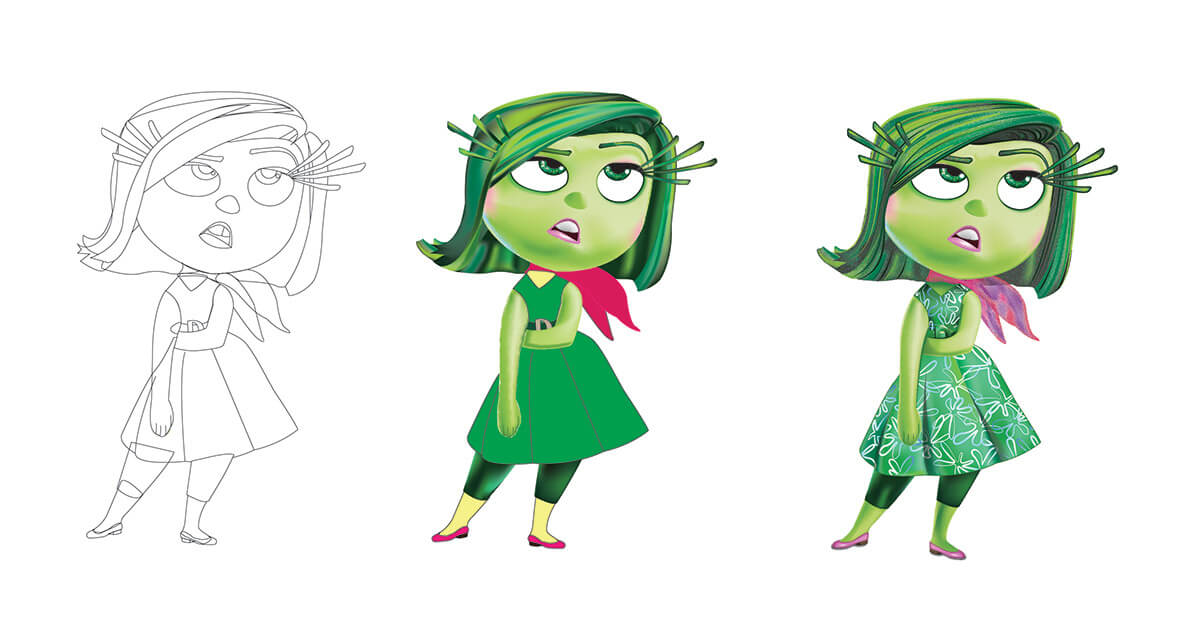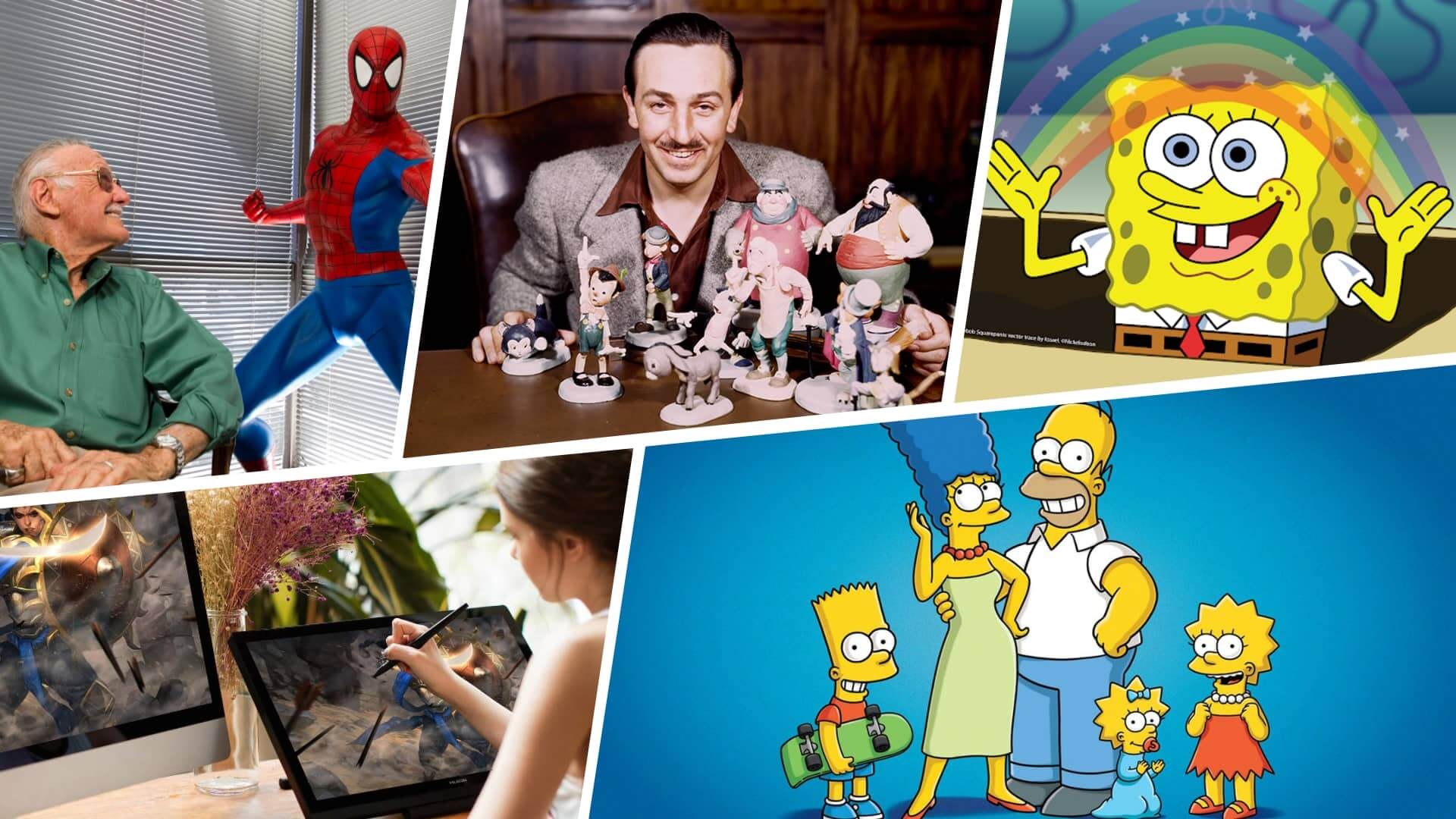Some of the most memorable characters in television and film come from the world of 2D and 3D animation. Before these characters are even animated, however, they are designed.
Iconic characters are much more than great drawings. They are given personalities and details that make them iconic and serve as the vehicle of a story. This is the goal of character design. In this article, we’ll take a closer look at the purpose of character design, what makes a character design so great, and what the process of designing a character entails.
what is character design?
First, let’s define character design
Character design is used to create characters for the best animated movies, comic books, toys, commercials, and books. To get a better idea of what all character designers aim to do, let’s take a look at the character design definition.
CHARACTER DESIGN DEFINITION
What is character design?
In visual arts, character design is the full creation of a character’s aesthetic, personality, behavior, and overall visual appearance. Character designers create characters as a vehicle for storytelling. This means that every aspect of a character such as shapes, color palettes, and details are chosen for a specific reason.
The details of a character’s personality often inform character designers on the visual attributes of a character. Principles such as color theory, shape language, and even general psychology all help an artist create an effective character design.
Key components of good character design:
- Silhouette
- Color palette
- Exaggeration
define character design
The Purpose of Character Design
Video games, animated television shows, and movies are all driven by story. And stories are driven by character. Character design aims to make these characters engaging, visually stimulating, and memorable.
In the world of visual arts and animation, artists have the opportunity to create characters from absolute scratch. This allows them to use every aspect of design to create a unique character. Check out the video below to better understand how character design is geared more toward storytelling rather than solely creating a great drawing.
What is Character Design?
Character design aims to create iconic characters that serve as vehicles for a story. Great character designs are memorable and iconic. But what exactly makes a great character?
Related Posts
how to make good character design?
Components of Good Character Design
Good character design is all about clarity. This means not only having a stimulating design, but one that is distinct no matter how we see the character. Here are the three components to good character design.
Silhouette
To put it simply, a silhouette of a character is what is left when you remove all colors and details and fill the outline of the character shape solely with black.
A sign of good character design is a character being recognizable solely from their silhouette. For example, take a look at all of the silhouettes below. How many characters can you name just from their silhouette?

GOOD vs BAD Character Design: Tips and Tricks!
If you’re like us, quite a few of these characters are recognizable from their silhouette. Sure, many of these characters are iconic, but they became iconic because of good, clear character design.
When creating a distinct character silhouette, it’s important to have a solid understanding of shape language. Take a look at the video below to learn more about the language of shapes and how they contribute to great character design.
Use Shape Language to Create BETTER Character Designs!
In addition to shapes, character designers have to be intentional and strategic with their use of color.
Palette
Palette refers to a character designer’s use of color. And when it comes to color, selectivity is key. The last thing you want is a character that is full of countless colors with no hierarchy or intentional use of palette. This will end up distracting the audience rather than engaging them.
It’s important to try and use one color as the dominant color of a character and try to minimally use other colors to support this color. Try to use colors that support each other rather than compete. To understand the effect of various color palettes, check out our video breakdown of color theory in film below.
Color Psychology for Directors • Subscribe on YouTube
When designing a character, it is easy to get carried away with color creating vibrant and complex color palettes. But remember that typically, the simpler your color palette is the better.
Exaggeration
Out of all three of these fundamental components of character design, exaggeration is arguably the most important as it pertains to storytelling. Exaggeration utilizes specific characteristics to purposely elicit emotional and psychological responses from an audience to a character.
These exaggerated characteristics can be the difference between an audience perceiving a character as heroic or menacing. This video by BaM Animation explains how and why exaggeration is the ultimate storytelling tool in character design.
GOOD vs BAD Character Design: Tips and Tricks!
Silhouette, palette, and exaggeration are three fundamental components of good character design. While there are plenty of details a character designer must consider, these three elements are often at the core of what makes a character design memorable or completely forgettable.
how to create character design?
Character Design Process
Now that you understand the purpose of character design and the fundamental components to good character design, let’s take a look at the basics of the character design process.
Preparation
Before any line can be drawn, character designers must study and prepare. A huge part of this preparation is having a comprehensive understanding of things like anatomy, shape language, psychology, color theory, and story. This video below on anatomical shape language is one of many resources beginner character designers have on improving at their craft.
ANATOMICAL SHAPE LANGUAGE
Preparation is understanding the theoretical principles that go into great character design. Putting these principles into practice, however, is where the real magic happens.
Write a prompt
Creating a unique and memorable character from scratch can be difficult. There are a million possibilities to consider. A great character designer always begins with the story. To narrow in on a character’s purpose to a story, consider writing a prompt.
A prompt will give you a clear, distinct direction as to where to take a character. For a prompt example, take a look at the video below where you can learn more about how a prompt leads to a clear and effective character design.
CHARACTER DESIGN 1: THUMBNAILING
Gather resources and references
Like any form of art, inspiration is essential. Gather various references from different resources to get character design ideas going. These references can be from any medium like animation, photography, cinema, comic books, or paintings. Many character designers even have their favorite references on hand as they take on the next step — creating a thumbnail.
Create a thumbnail
Creating a thumbnail is the first time a character designer starts to put their ideas onto paper (physical or digital). This is a safe space where artists experiment and create loose sketches to get an idea of what direction to take.
There are various approaches to thumbnails. A common and effective approach is to begin by sketching silhouettes. Silhouettes give character designers a blueprint that can be iterated on with more detail. This video below by kimby arting demonstrates this thumbnail trick along with a few others.
Improve Your Character Designs with these Thumbnail Tricks!
Finalize details and linework
Once artists are satisfied with their thumbnails and sketches, they begin finalizing the character design. By adding linework, color, and detail, character designs are flesh out and are brought to a more finalized state. Character design is often about refinement. This does not necessarily mean adding, but improving upon a character design.

Character design from Inside Out
Creating a character is never simple. Afterall, character designers are essential creating a full fleshed personality with distinct visual characteristics out of thin air. The character design process is incredibly intentional and requires equal amounts of artistic and storytelling skill. The next time you see a great character design, try to narrow in on what makes it great and the choices a character designer made to make it so.
Related Posts
UP NEXT
What is Animation?
Character design is usually a precursor to animation. Studios like Disney and Pixar all have talented character designers that are geared toward animated storytelling. There are, however, various types of animation that character designers design for. Learn more about animation and the various types that exist in our next article.
Up Next: What is Animation? →
Showcase your vision with elegant shot lists and storyboards.
Create robust and customizable shot lists. Upload images to make storyboards and slideshows.
